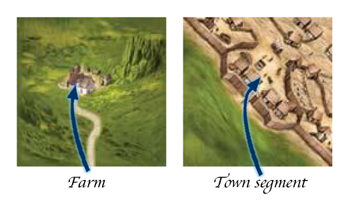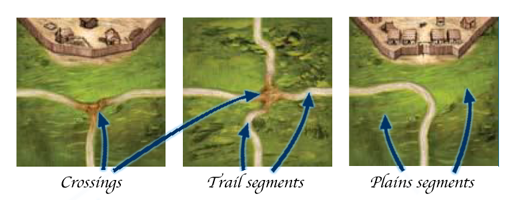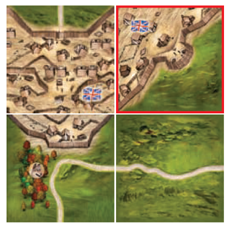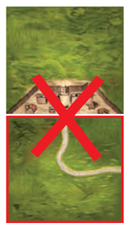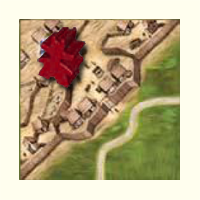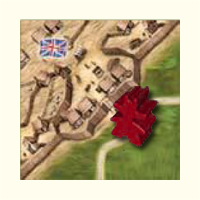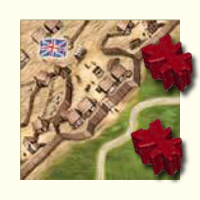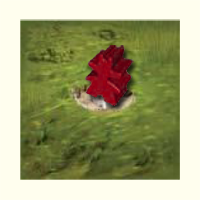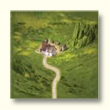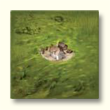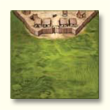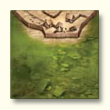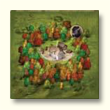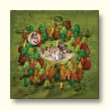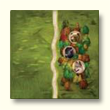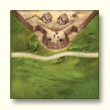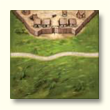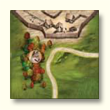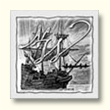Difference between revisions of "New World"
m (→Preparation) |
|||
| Line 46: | Line 46: | ||
* The player's turn is over and the next player, in clockwise order, takes his/her turn in the same manner | * The player's turn is over and the next player, in clockwise order, takes his/her turn in the same manner | ||
These actions are described, in more detail, below. | These actions are described, in more detail, in the sections below. | ||
[[File:NewWorld_features1.png]] [[File:NewWorld_features2.png]] | |||
=== Placing a tile === | === Placing a tile === | ||
Revision as of 16:52, 8 October 2018
General info and comments
Originally released by Hans im Glück in 2008 as Mayflower, when it was published by Rio Grande Games, in English, the name was changed to New World.
The game uses many of the standard Carcassonne game concepts, but moves it from mediaeval France, to the early settlement of the North American east coast.
The players develop the New World starting from a representation of the east coast between Jamestown in the south, stretching up to Plymouth in the north. Leaving the coast behind, exploring ever further westward, players deploy their settlers on the trails, in the towns, in the farms, and on the plains. The skills of the players to develop the area and use their robbers, shopkeepers, trappers, and farmers will determine who is victorious.
The players place land tiles turn by turn. As they do so, the trails, towns, plains, and farms emerge and grow. On their turns, the players can deploy their settlers on these features to earn points. Players score points during the game and at the end. The player with the most points after the final scoring is the winner.
The game introduces the concept of surveyors who typically lead the drive westwards. If your settlers fail to move westwards on the coat-tails of the surveyors they may lose the chance to score points.
Contents
- 95 Land tiles
- 30 settlers in 5 different colours (6 each, but one used as scoreboard marker)
- 2 surveyors in white
- Game Board combining Scoring Track and Start Spaces
Rules
Preparation
Place the game board on one side of the table so that the starting spaces face toward the middle of the table. Shuffle the land tiles face down and stack them in several face-down stacks so that all players have easy access to them. [1]
Each player takes the 6 settlers in his/her colour and places one as his/her scoring marker in the large space at the lower left of the scoring track. Each player places their remaining 5 settlers in front of them on the table (the play area) as their supply.
Place the two surveyors on any two of the starting spaces on the game board. [2]
The players decide among themselves who will be the starting player, using any method they choose.
Players take turns in clockwise order beginning with the starting player. On a player's turn, he/she executes the following actions in the following order:
- The player must draw and place a new land tile
- The player may deploy one of his/her settlers from his/her supply to the land tile just placed
- If, by placing the land tile, farms, trails, and/or towns are completed, they are now scored
- The player's turn is over and the next player, in clockwise order, takes his/her turn in the same manner
These actions are described, in more detail, in the sections below.
Placing a tile
First a player must draw a land tile from one of the face-down stacks. After looking at it, it should be shown to the other players (so they can advise on the "best" placement of the tile), and then placed on the table, using the following rules:
- The new tile (shown with red borders in the examples) must be placed with at least one edge abutting one previously placed tile or abutting one of the starting spaces on the game board. The new tile may not simply be placed corner to corner with a previous tile or starting space.
- The new tile must be placed so that all plains, town, and trail segments on the new tile continue to plains, town, and trail segments on all abutting tiles, respectively.
In the rare circumstance where a drawn tile has no legal placement (and all players agree), the player discards the tile from the game (into the box) and draws another tile to place.
Placing a settler
After the player places a land tile, he/she may deploy one of their settlers, using the following rules:
- The player may only play 1 settler on a turn
- The player must take it from his supply
- The player may only deploy it to the tile just placed
- The player must choose where to deploy the settler on the tile, either as a:
| or | or | or |
- The player may not deploy a settler on a plains, town, or trail segment if that segment connects to a segment of the same feature on another tile (no matter how far away) that already has a settler (from any player, including himself) on it. See the following examples.
When a player has deployed all of their settlers, they continue to play land tiles each turn. Although a settler may not be recalled, settlers are returned to players when farms, trails, and towns are scored.
The player’s turn is over and the next player in clockwise order takes their turn, and so on.
Remember: if, through the placement of the tile, towns, trails, and/or farms are completed, these are scored before moving on to the next player.
Tile distribution
Tile Count: 95
Back of Tiles:
Scoring Tiles: 6
Footnotes
For Icons explanation and licensing please visit Icons page.

